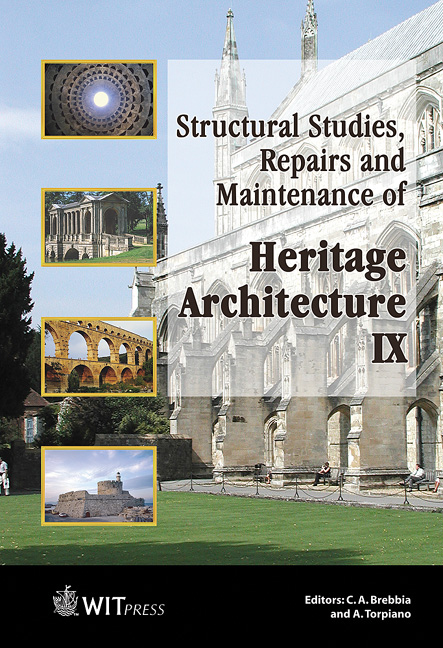Investigations And Project Hypotheses For The Recovery And Enhancement Of The Value Of A Military Site: The Case Of The Ancona Citadel
Price
Free (open access)
Transaction
Volume
83
Pages
10
Published
2005
Size
1,102 kb
Paper DOI
10.2495/STR050051
Copyright
WIT Press
Author(s)
A. Fausto Pugnaloni & F. Fiori
Abstract
The case of building recovery in military architecture involves many problems: the lack of historical documentation, the difficult interpretation of the individual building components, the historical evolutions and the attribution of new destination use. The Cittadella represents one of the must important examples of military architecture in Ancona. During the XVI century, the city had a great transformation: from merchant square to \“Armi” square for a new system of walls and fortifications. The Cittadella constitutes the most important of its architectural elements and shows the ability and the genius of Antonio da Sangallo il Giovane, the architect of fortresses. The project of Cittadella recovery concerns the walls with its eight ramparts, the buildings and the other handmade arts. We studied the architectonic elements of the buildings, and we have used them to reconstruct the model of the complex whole with metrical and geometrical correct properties. We also studied a method to examine the complex whole to recover the superficial set of the area (merloni, troniere, bastioni...) Keywords cultural heritage, military architecture, buildings recovery, history, fortress, model, project. 1 History City walls and the urban plan, strictly related to the technical, political and social needs, used to represent individual reality born together with cities, whom defense came from the rising \“rules” and their mercenary troops in the second half of the XV century. Defensive works of Malatesta, Montefeltro, and Della Rovere constitute the bases of armed architecture in the Marche, and their
Keywords
cultural heritage, military architecture, buildings recovery, history, fortress, model, project.




